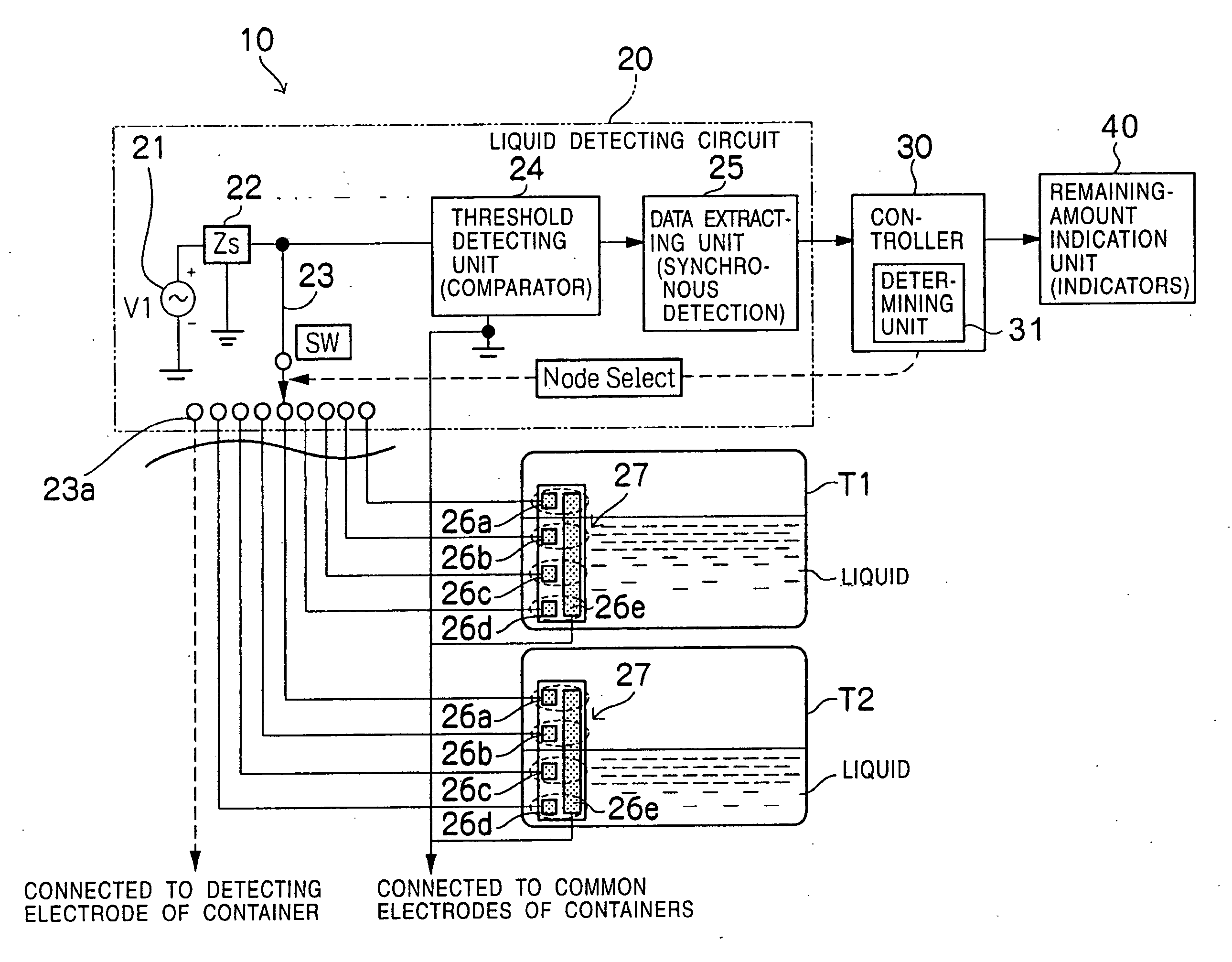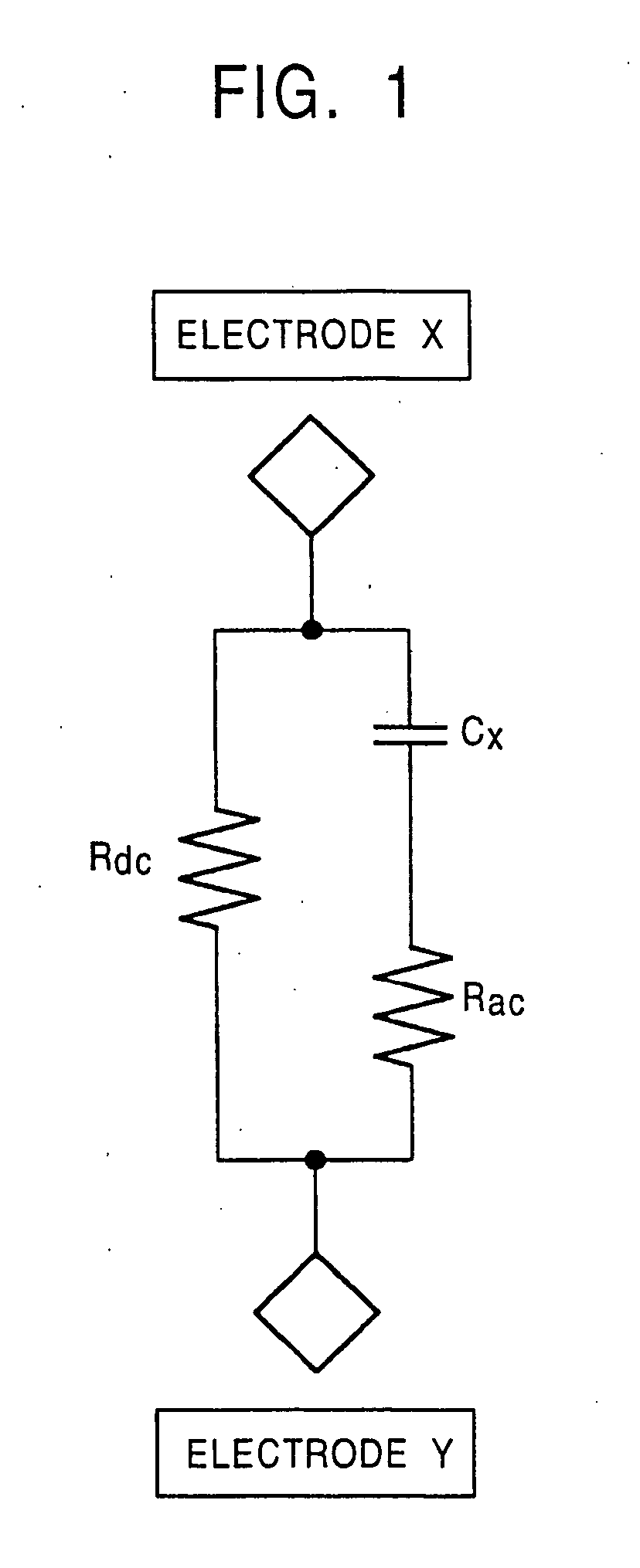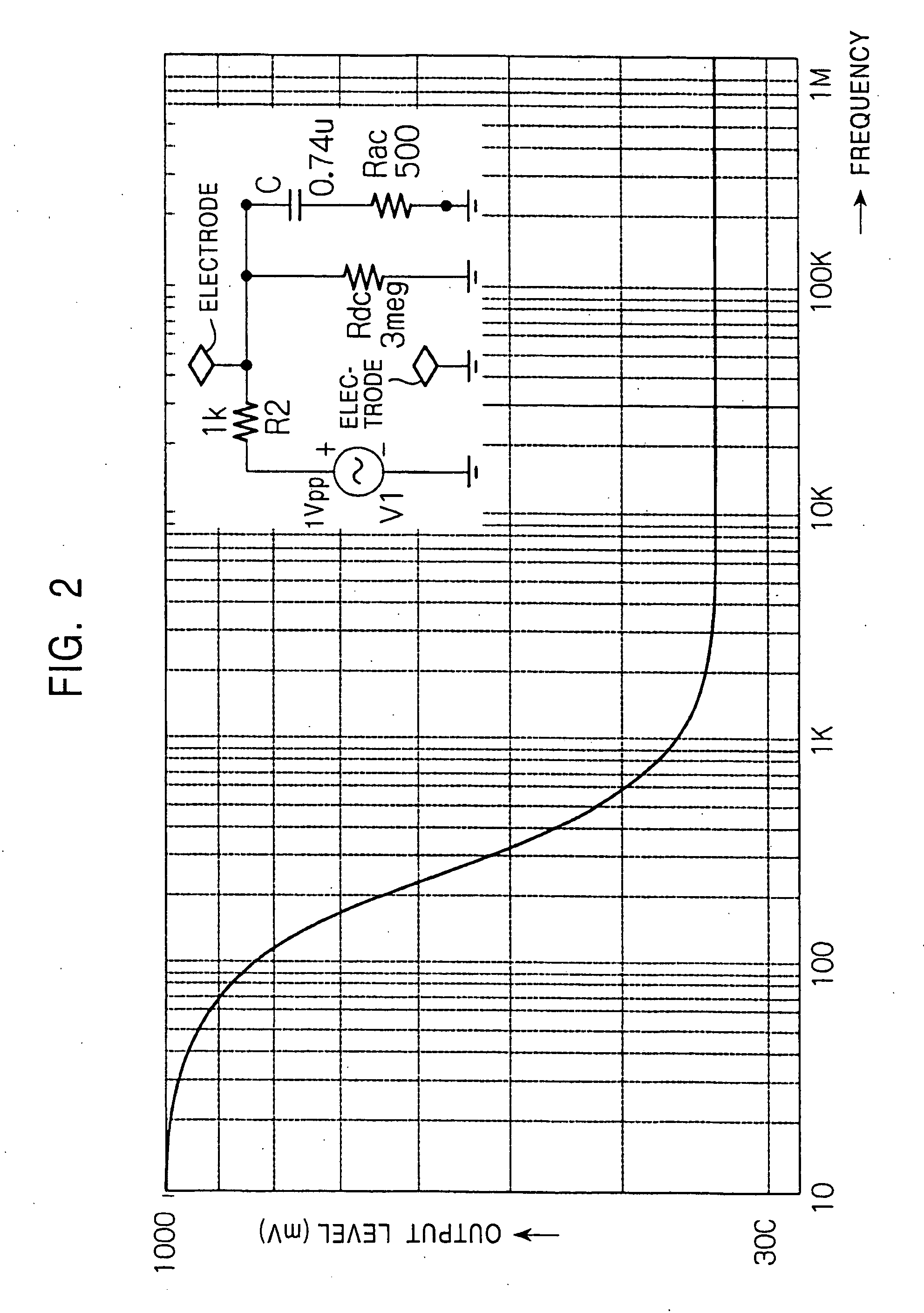Liquid detecting apparatus, liquid-amount detecting apparatus, liquid detecting method, and liquid-amount detecting method
a liquid detection and liquid detection technology, applied in the field of liquid detection apparatuses or liquidamount detection apparatuses, can solve the problems of inability to visually determine the remaining amount of ink from the external appearance of the ink tank, inability to use the ink that serves as a “primer” and other problems, to achieve the effect of improving detection reliability, avoiding change in liquid characteristics, and increasing detection speed
- Summary
- Abstract
- Description
- Claims
- Application Information
AI Technical Summary
Benefits of technology
Problems solved by technology
Method used
Image
Examples
first embodiment
[0059]FIG. 4 is a diagram showing the construction of a liquid-amount detecting apparatus 10 according to a first embodiment of the present invention. As shown in FIG. 4, a conductive liquid that is to be detected by the liquid-amount detecting apparatus 10 is contained in containers T (T1 and T2).
[0060] For example, if the liquid-amount detecting apparatus 10 is used in an ink-jet printer, the containers T are ink tanks, and the liquid in the containers T is ink that is used in the ink-jet printer. In the case of a color ink-jet printer that uses ink of a plurality of colors, a container T (ink tank) is provided for each of the colors.
[0061] The liquid-amount detecting apparatus 10 according to this embodiment includes a liquid detecting circuit 20, a controller 30, and a remaining-amount indication unit 40.
[0062] The liquid detecting circuit 20 includes an AC-signal source (V1) 21, an impedance (Zs) 22, a switch (SW) 23, a. threshold detecting unit 24, a data extracting unit 25...
second embodiment
[0104]FIG. 7 is a waveform chart showing a second embodiment of the present invention, and it corresponds to FIG. 5 for the first embodiment.
[0105] In the first embodiment, the AC signal with a DC component having been removed therefrom is a rectangular wave; whereas in the second embodiment, a sine wave is used.
[0106] In FIG. 7, an original signal output from the AC-signal source 21 is a rectangular wave, as shown in part (A). This signal is converted, for example, through a low-pass filter, into a sine (or like) wave shown in part (B).
[0107] The signal shown in part (B) is obtained by converting a rectangular wave into a sine (or like) wave and removing a DC component from the sine wave. In part (A) of FIG. 7, as compared with part (A) of FIG. 5, the phase is shifted by ¼, as indicated by P5. Thus, the sine wave crosses 0 V at 1, 2, 3, . . . μsec.
[0108] Then, detection is performed when the clock signal rises (when the sine wave reaches a minimum level). The timing of detectio...
third embodiment
[0111]FIG. 8 is a circuit diagram showing a third embodiment of the present invention, and it corresponds to FIG. 6 for the first embodiment. FIG. 9 is a waveform chart relating to the circuit diagram shown in FIG. 8, and it corresponds to FIG. 5 for the first embodiment.
[0112] In the first embodiment, power sources of ±5 V are required, as shown in FIG. 6. In contrast, in the third embodiment, only a power source V2 of +5 V suffices to achieve the same functions as the first embodiment.
[0113] In this circuit, the average voltage of measurement equals the DC component of the clock signal. Thus, if a 5 V power source is used, measurement is performed at 2.5 V or nearly as a center. For the purpose of comparison, a DC power source V3 of 2.2 V, connected to the base of the transistor Q2, is used.
[0114] Furthermore, although all the nodes 23a of the switch 23 are connected to the detecting electrodes 26a to 26d in the first embodiment, a node 23a′ that is connected to the common elec...
PUM
 Login to View More
Login to View More Abstract
Description
Claims
Application Information
 Login to View More
Login to View More - R&D Engineer
- R&D Manager
- IP Professional
- Industry Leading Data Capabilities
- Powerful AI technology
- Patent DNA Extraction
Browse by: Latest US Patents, China's latest patents, Technical Efficacy Thesaurus, Application Domain, Technology Topic, Popular Technical Reports.
© 2024 PatSnap. All rights reserved.Legal|Privacy policy|Modern Slavery Act Transparency Statement|Sitemap|About US| Contact US: help@patsnap.com










